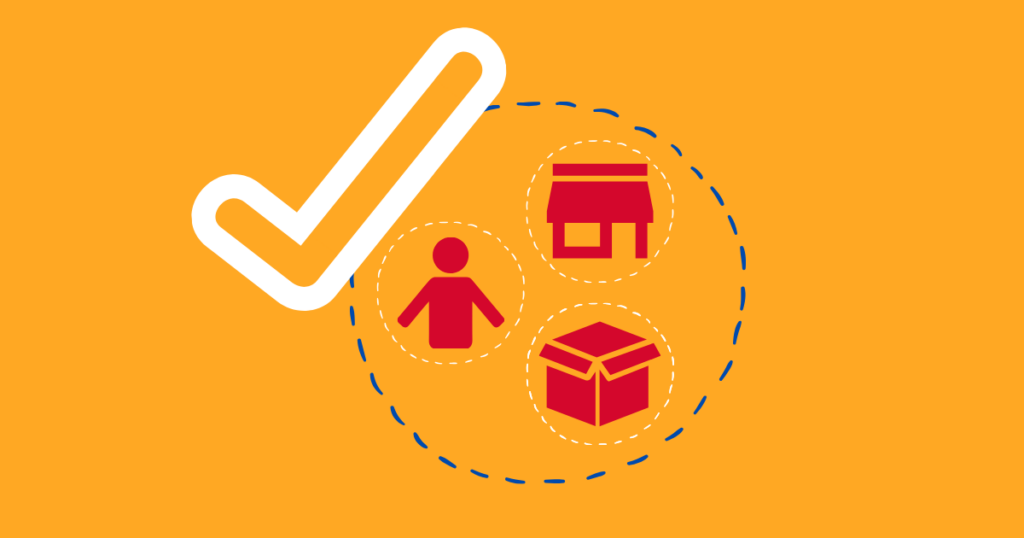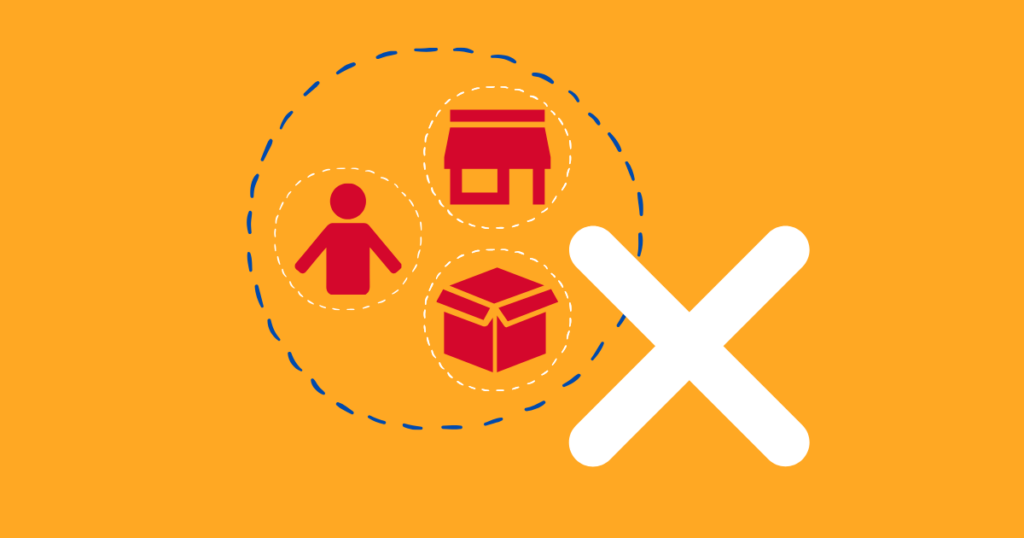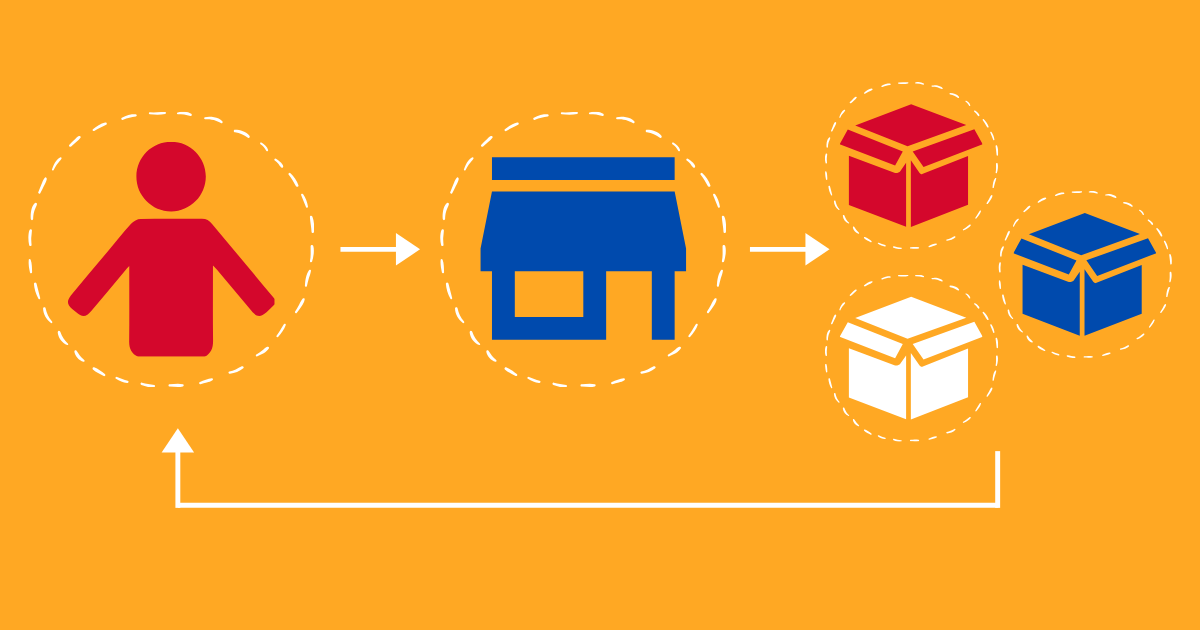What is a Dropshipping Store?
Dropshipping is the use of a third party to package and ship a product sold from an ecommerce online store instead of keeping the products in stock. It is a fulfillment arrangement that allows an online store to sell products as their own while the supplier fulfills the actual order.
The ecommerce owner upcharges the supplier price to make a commission. Dropshipping gives the owner access to different suppliers and those products so they can choose what merchandise they offer in their online store.
Dropshipping is a modern business model that enables a new and technology-advanced way of selling online without the risks of a traditional ecommerce model, although it does create new obstacles that hinder the dropshipping model. Below are the advantages and disadvantages of dropshipping.
Advantages of a Dropshipping Business

1. Requires less investment
To jumpstart your dropshipping business it requires significantly less of an investment as the costs of inventory, processing orders, etc. do not fall on the ecommerce owner. Instead, the main costs include developing and maintaining the ecommerce store and implementing marketing efforts, which are minimal compared to the traditional approach. This enables owners to open and manage an ecommerce store with comparatively little investment.
2. Less demanding
In addition to less investment, the dropshipping model makes the creation and launch of an ecommerce store much more accessible. It removes the hassle of supplying, storing, and managing products, packaging and shipping, tracking orders, handling physical returns, or onboarding additional employees. All these essential components of an online store are outsourced to the dropshipping supplier while the store reflects that of a traditional business.
3. Allows experimentation
With a minimal investment, it means there is less risk associated with creating a dropshipping business. Therefore, it provides an opportunity to test what products, categories, designs, etc. perform well among customers. It gives room to test between options without risking a major financial or business loss. Experimentation allows the owner to analyze and learn what information, product, or approaches work the best, therefore supporting the advancement of their ecommerce business, such as moving away from a dropshipping model to increase margins and operations, as described in the next section.
4. Supports scalability
While expanding a business is an exciting venture, the growing pains can be a stressful experience. Although the dropshipping model makes scalability a smooth process as the increase of handling falls on the capabilities of the suppliers, rather than the operations of the owner. The large shifts often associated with a growing business are more manageable giving the owner time to appreciate the growth while contributing additional efforts for expansion.
5. Permits flexibility
With the limited commitment of running a dropshipping business, it provides the convenience of being your own boss. While all the responsibility of managing the website, suppliers, and customer service is dependent on the owner, it still offers freedom of where or when to work. There is not a set duration or location the owner needs to be which makes running a dropshipping business a flexible path.
Disadvantages of Dropshipping Business

1. High competition
Since starting a dropshipping business requires little investment and risk, there are numerous ecommerce stores that operate using dropshipping. Therefore, the market is or can become saturated with many different businesses that have a similar arrangement, which significantly increases the competition. In addition, the dropshipping suppliers are sourcing products for many different online stores therefore there is little product distinction between the stores.
To counter this issue, the business can offer a different value that makes their store stand out among the competition. By ensuring quick customer service, supporting a specific cause, or capturing the business’ personal story, it adds extra value to the business outside of the actual product.
2. Sparse margins
With less money invested in the business, this typically indicates a smaller profit margin. The high competition and the overlap of similar products often compel owners to lower their prices in order to compete with the other dropshipping businesses. A dropshipping model makes starting an online store easy, but it subsequently lowers the profitability rate.
Yet a dropshipping business is not about making money quick, it is about testing, analyzing, and developing a business based on real-market research. This is why the long-term approach will typically have better results. The low-risk method is used to explore the online space to establish a successful business which could ultimately lead to leaving (in-part or full) the dropshipping model in order to increase margins.
3. Limited control
While the advantage of a dropshipping business is it requires less operational time and resources, this contributes to the owner’s overall limited control. While your suppliers may be reliable, mistakes are inevitable. This means that it is your job as the owner to facilitate and address these issues as faulty orders reflect your business, not the supplier. And since the owner needs to communicate with the supplier instead of handling the problem directly, it can slow down the response process thus extending the situation. A customer is not aware that the online business uses dropshipping to source, process, and ship orders, therefore any dilemmas or difficulties will reflect the business and need to be managed by the owner.
4. Shipping complications
Oftentimes the products being sourced for a dropshipping business are being sourced by multiple different suppliers which creates inconsistencies between shipping fulfillments and costs. So when a customer purchases multiple products that are sourced from different suppliers, each supplier will charge a shipping cost which could fall on the owner as it does not reflect well to charge the customer multiple shipping fees. This complicates the transaction and shipping process which could also cut into profit margins.
5. Inadequate branding
Last, since the suppliers handle the fulfillment process, this limits the ability for the business to brand their products and packaging. By not having the ability to incorporate customized branding it eliminates adding important touchpoints along the customer’s journey and limits brand recognition.
Dropshipping makes launching and running an ecommerce store a manageable and feasible endeavor. Starting a dropshipping business requires little investment therefore supporting the creation of a platform to experiemenet a business idea that can easily be scaled, all while still allowing a flexible work schedule. In contrast, there is a lot of competition among dropshipping businesses causing low margins. The limited control, shipping complications, and lack of customized branding can also hinder the business’ advancement. Ultimately, the advantages and disadvantages of a dropshipping business should be weighed based on the goals of each ecommerce store in order to evaluate if a dropshipping model would benefit the business.









